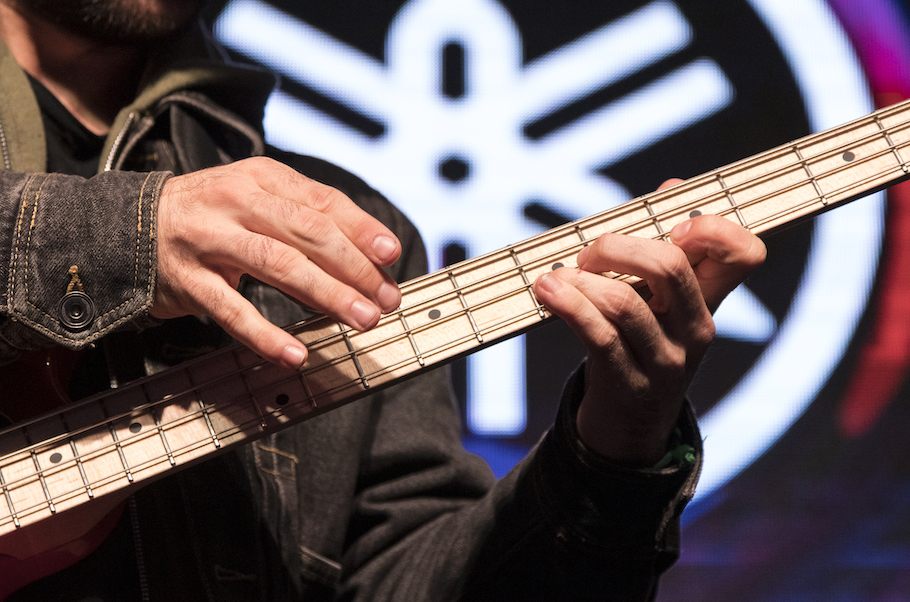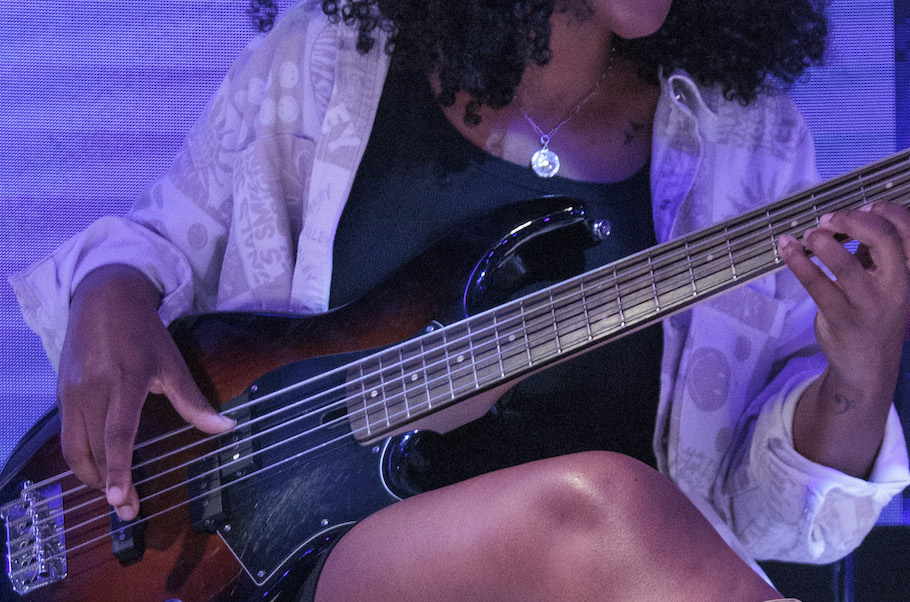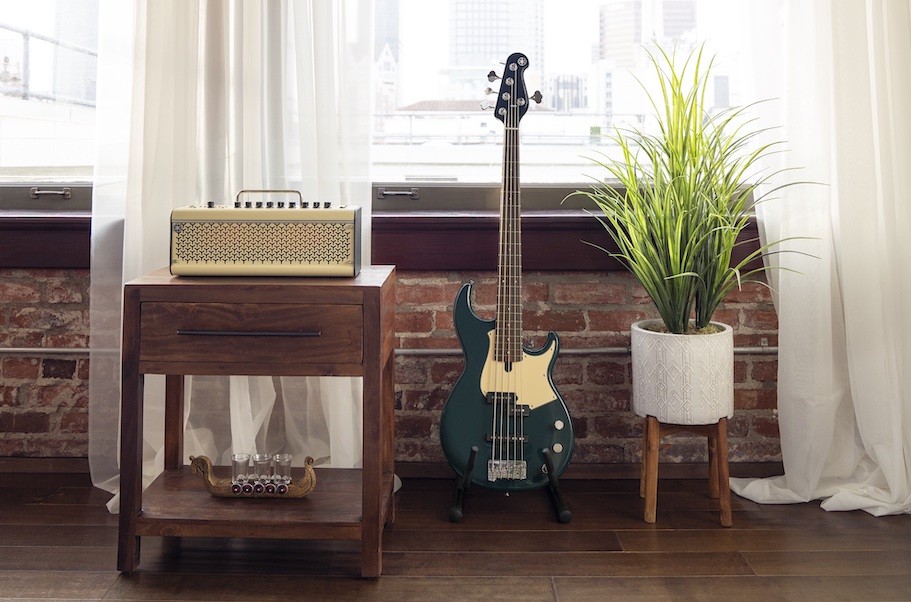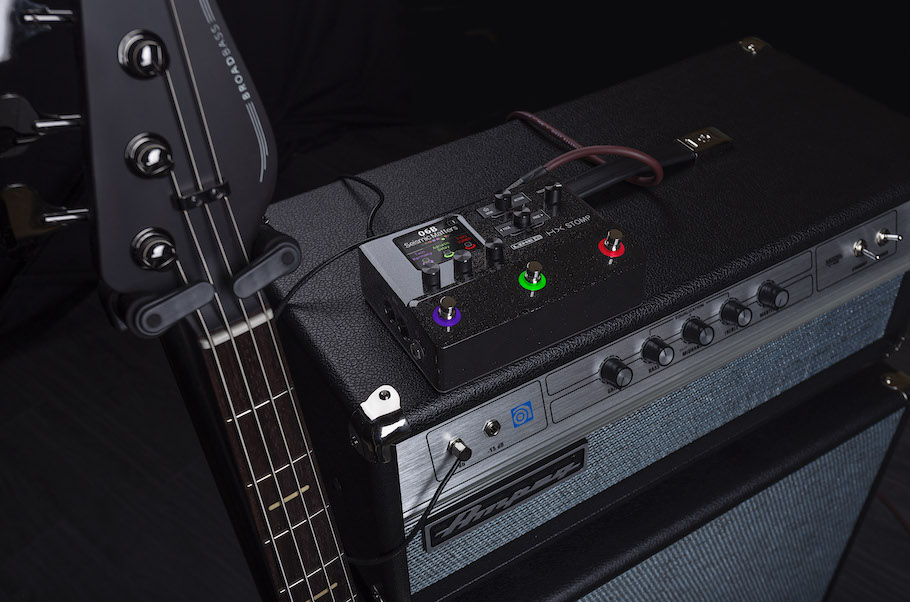The Importance of Roots, Fifths and Octaves in Bass Playing
How to play the crucial notes … and have fun doing it.
As bass players, our number one job is to play roots. Anything else we do is extra, but playing the root of each chord is what we’re most often expected to do. Unfortunately, basslines that consist of only roots can be boring for both the listener and the player. Here’s a guide to augmenting roots with other notes — specifically fifths and octaves — when playing bass. Believe it or not, with just those three choices, you can craft basslines that are interesting to the ear and fun to play.
Ready to learn more? Read on …
Chord Changes
You can think of a song as a series of chords — in other words, a chord “progression.” One popular chord progression might begin with an A minor 7 (Ami7) chord, go to a C7 and then an F7 before ending on an E7. This is an a “iii-V-I-VII7” series because in the key of F, A minor 7 is the third (the “iii”), C7 is the fifth (the “V”), F7 is the root (the “I”) and E7 is a major variation on the seventh chord (the “VII7”), which would usually be E minor 7 flat 5.
In this case, the rest of the band will assume that whatever else the bass player does, he or she will play an A for the Ami7, a C for the C7, an F for the F7 and an E for the E7. This assumption is so strong that guitarists and keyboardists often play “rootless” voicings, chord inversions and substitutions because they know the bassist will take care of the root. If you’re struggling to learn a new song, nailing the roots with authority is a great start.
SPICING IT UP
However, as stated earlier, sticking to the roots alone usually isn’t enough. But even before adding in other notes, try varying your feel. Sustain the root (sometimes a moment in the song is calling for just a “football” — a whole note) or keep it short; push and pull or repeat it for the length of each chord. As always, staying locked into your drummer is crucial; working with (and sometimes against) the kick drum is one of the foundations of playing bass.
Another way to get the most from the root is to play it in octaves or at different places on your fretboard. On a standard four-string bass, for that Am7, play the A at the fifth fret on the E string and then zoom up the fretboard to the A at the 17th fret. Bounce between the open E string and the one at the seventh fret of the A string. Alternate between octaves of an F. If you have a five-string model like the Yamaha BB435, explore the possibilities of the C at the third fret of the A string, the low C at the first fret of the B string, and the C at the fifth fret of the G string.

THE FIFTH
No matter how creative you get, roots and octaves may not be enough. The next option? The fifth. You’ll find the fifth above the root one string higher (toward the floor) and two frets up (toward the bass’ body); the fifth below the root will be found on the same fret, one string lower. To play the root and fifth of a C chord, for example, play a C on the third fret of the A string, followed by a G on the fifth fret of the D string or at the third fret of the E string.
The root-fifth-octave shape is familiar to most bassists because it works so well and in so many different musical genres, most prominently country music:
This same pattern plays a major role in Tejano, polka and tuba basslines — it’s even used quite often to nail down the low end in reggae music:
To show how you can incorporate fifths into your playing, let’s revisit our iii-V-I-VII7 chord progression. Try adding the fifth of each chord to your A, C, F and E roots and octaves — an E to the Ami7, a G to the C7, a C to the F7, and a B to the E7, then try out variations like these:
- Play the root, followed by the fifth above
- Play the root an octave up, followed by the fifth below
- Start with a low-octave root, go up to the fifth, and then hit the root an octave higher
- Bounce back and forth between the fifth above and below before landing on the root in-between
Listen to how the bassline in this audio clip (played on a Yamaha BB435, with the pickup and tone controls wide open) connects to the drums as soon as they enter, playing mostly roots at first before adding octaves, fifths and slides.
As you can hear in the next clip, combining these choices with different playing techniques (such as adding very high octaves) and rhythmic variety gives you endless options.
If you’re jamming to music that’s new to you and aren’t sure whether the chords are major or minor, playing the root and fifth will work in most cases … with one common exception: the minor 7 flat 5 chord.
Here’s why: In any major key, the root-fifth-octave shape is great for the first, third and fifth chords. It also works well on the second, fourth and sixth chords. In F major, those would be Gmi7 (the second chord), B7 (the fourth chord) and Dmi7 (the sixth chord). Usually, if we build a chord on the seventh — in the key of F major, it would be an E half-diminished — we’d have to lower the fifth, which is why a half-diminished chord is also called a minor 7 flat 5; the notes of an E minor 7 flat 5 chord are E (the root), G (the minor third), B-flat (instead of a B, the usual fifth) and D (the minor 7). In this case, however, we’re playing a seventh chord built on the E, so we have a G-sharp (a major third), a B (the fifth) and a D (the minor 7).
That said, depending on the music you’re playing, you can learn dozens of songs without ever coming across a minor 7 flat 5 chord. When you do, enjoy its tangy flavor and be sure to flat the five. Eventually, you may learn to use all the chord tones in your basslines and experiment with your own inversions and substitutions. In the meantime, knowing your roots, fifths and octaves will take you a long, long way.
















